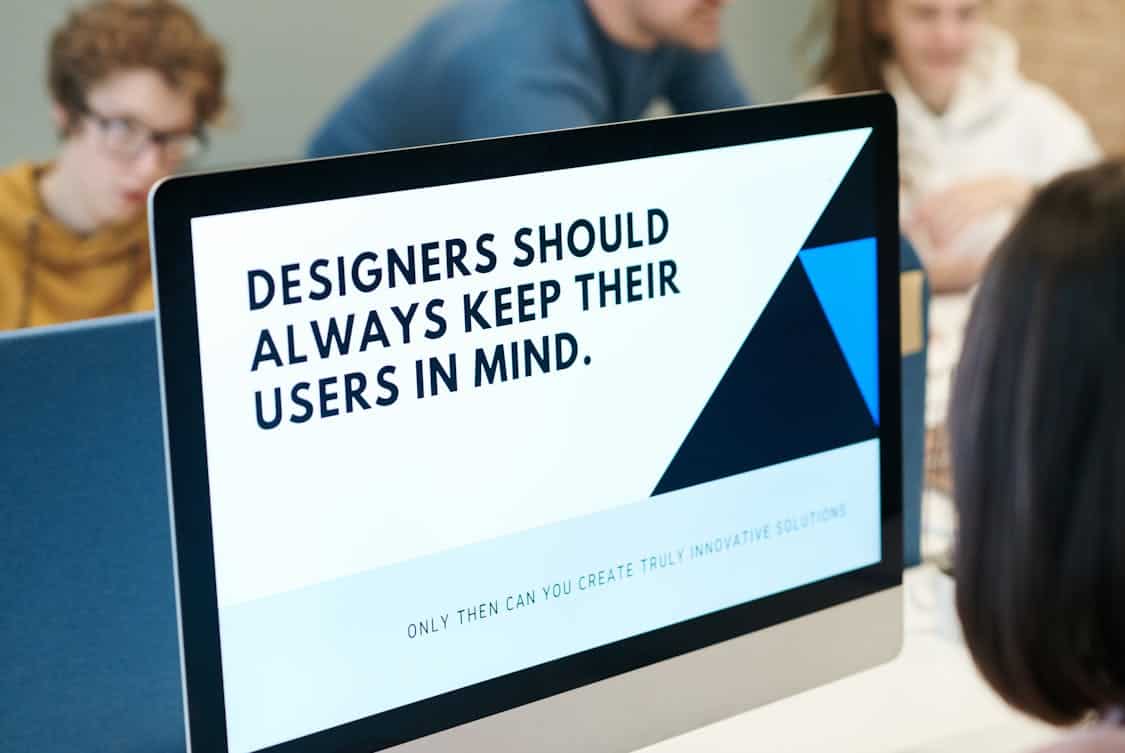Creating an engaging and effective website is a blend of art and science. Web design services play a pivotal role in enhancing user experience (UX) by considering various elements that make navigating a site enjoyable and intuitive. Let’s break down some key areas where these services shine. User-Centric Design Principles At the heart of effective …
How Do Web Design Services Improve User Experience? Explained

Creating an engaging and effective website is a blend of art and science. Web design services play a pivotal role in enhancing user experience (UX) by considering various elements that make navigating a site enjoyable and intuitive.
Let’s break down some key areas where these services shine.
User-Centric Design Principles
At the heart of effective web design is a user-centered approach. This method prioritizes the needs and preferences of users, ensuring that every design decision reflects what visitors want.
By conducting thorough research about target audiences, web designers can craft experiences that resonate well. This might involve user feedback, surveys, or analytics to identify common pain points.
When designers focus on user-centric elements, they ensure that the layout, navigation, and content align with user expectations.
Elements such as intuitive menus, clear calls-to-action, and easily accessible information make a site more friendly. Users are more likely to stick around if they feel comfortable and understood.
Visual Hierarchy and Clarity
Visual hierarchy is a design principle that helps users navigate a website efficiently. It involves organizing content in a way that guides the viewer’s eye towards the most important elements first.
Designers employ different font sizes, colors, and spacing to create a clear path for the user.
For instance, using larger fonts for headings and contrasting colors for buttons can lead a user directly to action items, such as signing up or making a purchase.
Clarity in design helps reduce cognitive load, allowing users to process information without feeling overwhelmed. When everything is laid out logically, users can find what they need without frustration.
Responsive Design for All Devices
In an age where mobile browsing is on the rise, ensuring that a website functions well across all devices is non-negotiable. Responsive design adapts the layout and content based on the screen size, providing an optimal viewing experience.
This versatility ensures that a website remains accessible and user-friendly whether accessed on a smartphone, tablet, or desktop.
If you’re looking for a seamless browsing experience no matter the platform, investing in responsive web design for all devices is the smartest choice you can make. Web design services that prioritize responsiveness not only cater to various devices but also improve search engine rankings.
Google favored mobile-friendly sites, so incorporating this feature enhances visibility. Ultimately, a seamless experience across devices encourages users to stay longer and engage more.
Loading Speed Matters

Imagine waiting for a website to load only to abandon it out of sheer impatience. Web design services focus on optimizing loading speed to prevent this scenario.
Several factors contribute to website loading times, including image sizes, server performance, and code efficiency.
By employing strategies like compressing images and minimizing code, designers can create faster-loading websites.
A speedy website contributes to user satisfaction; users tend to associate quick loading with professionalism and reliability. The faster a site loads, the less likely users will bounce away.
Accessibility for Everyone
Accessibility is a critical aspect of web design that aims to make websites usable for individuals with disabilities. This includes ensuring that screen readers, keyboard navigation, and other assistive technologies can easily interpret a site’s content.
Web design services that prioritize accessibility not only meet legal standards but also expand their audience reach.
Designers often implement features such as alt text for images, captioning for videos, and contrasting colors for text. By making these adjustments, they create a more inclusive environment where everyone can interact with the content.
An accessible website embodies the principle of universal design, making it beneficial for all users.
Effective Use of White Space
White space, or negative space, refers to the areas of a web page that are left unmarked. It might seem counterintuitive, but effective use of white space can significantly improve readability and user experience.
Designers strategically place white space around elements like text and images to create a balanced composition.
This breathing room helps users focus on specific content without feeling overwhelmed. A cluttered page can lead to confusion and frustration, while ample white space fosters a calm and organized layout.
It’s a subtle yet powerful technique that enhances comprehension and user engagement.
Engaging Content and Aesthetics
Content is king, but presentation matters just as much. The aesthetics of a website can draw users in and keep them engaged. Designers pay attention to color schemes, typography, and overall visual appeal to create an inviting atmosphere.
Using compelling visuals, such as high-quality images and videos, can enhance storytelling, making a website more memorable. Engaging content combined with an appealing aesthetic creates a positive first impression, encouraging visitors to explore further.
Intuitive Navigation
Navigation is the backbone of any website. If users can’t find what they’re looking for, they will likely leave.
Web design services that focus on intuitive navigation create structures that are easy to understand and use. This includes organizing content into clear categories, using descriptive labels, and ensuring that menus are easy to find.
Well-designed navigation helps users feel in control. Breadcrumbs, search functions, and logical pathways allow users to backtrack or explore related content seamlessly.
The smoother the navigation experience, the more likely users will continue exploring the site.
Calls to Action that Convert
Calls to action (CTAs) are essential for guiding users towards desired outcomes, whether that’s making a purchase, signing up for a newsletter, or downloading a resource.
Web designers strategically place CTAs throughout a website to capture user interest at the right moments.
Effective CTAs are visually distinct and use persuasive language. They create a sense of urgency or highlight the benefits of taking action.
By making CTAs clear and engaging, designers can significantly influence user behavior and drive conversions.
Testing and Iteration
Web design is not a one-and-done deal. Testing and iteration are vital components of the process.
Designers often conduct A/B testing, where different versions of a page are compared to see which performs better. This data-driven approach allows designers to refine their work based on real user feedback.
Continuous improvement helps keep the website aligned with user needs and preferences. By regularly updating elements based on testing results, designers can enhance user experience over time.
This commitment to evolution reflects an understanding that user experience is dynamic.
Integration of SEO Practices
Search engine optimization (SEO) is a significant aspect of web design that can impact user experience. When a site is optimized for search engines, it becomes easier for users to find relevant information.
Web design services often incorporate SEO best practices during the design phase.
This includes ensuring fast loading times, mobile responsiveness, and user-friendly URL structures. Designers also focus on the layout of content to improve readability and engagement.
An SEO-friendly site attracts more visitors, which naturally leads to a better user experience.
Emotional Connection Through Branding
Branding is more than just a logo; it’s about creating an emotional connection with users. Web design services that focus on brand identity ensure that every element of a website reflects the brand’s values and personality.
This consistency builds trust and loyalty among visitors.
A well-branded site can evoke emotions and create memorable experiences. Users are likely to return if they feel a connection with the brand, whether through storytelling, visuals, or overall design.
Building that emotional bridge is a subtle but powerful way to enhance user experience.
By focusing on these diverse facets, web design services contribute significantly to crafting user experiences that are not only enjoyable but effective.
Whether through functionality, aesthetics, or emotional engagement, a well-designed website becomes a valuable asset in any digital strategy.









